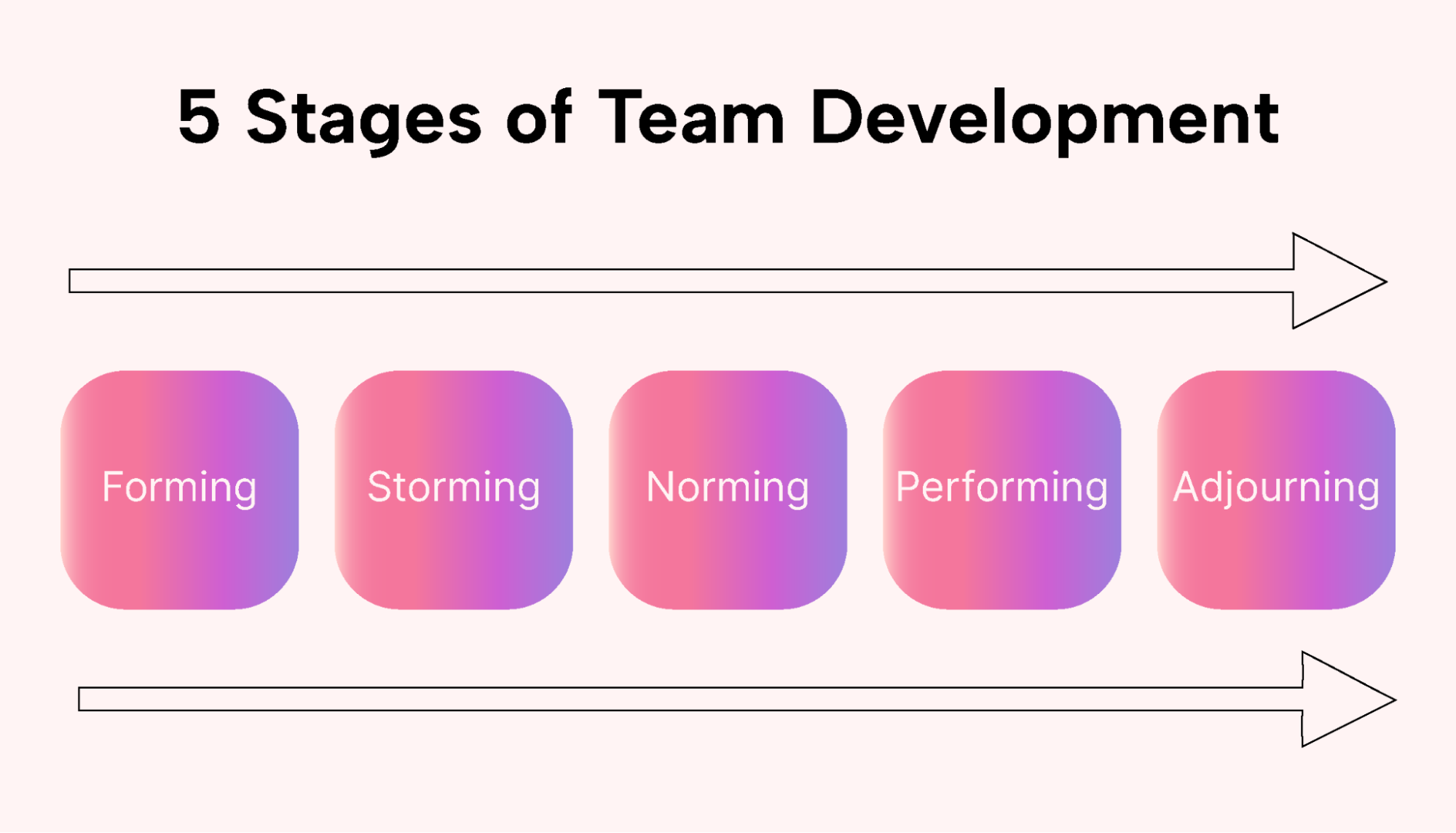The stages of team life cycle
-
Filippo Ceraolo
- 09 May, 2024
- 02 Mins read

English version
When a group comes together to achieve a common goal, it follows a path through various stages of development, as outlined in Tuckman's model. These stages are:
Forming
In this initial phase, team members get to know each other and define common goals. Enthusiasm is high, but there may be uncertainties about roles and responsibilities.
Storming
During Storming, tensions and conflicts emerge as team members come to terms with different ideas and working styles. It is a time of growth through confrontation and conflict resolution.
Norming
In the Norming phase, the team develops stronger relationships and establishes shared norms of behavior. There is greater mutual trust and a sense of belonging to the group.
Performing
In the Performing phase, the team achieves its highest level of productivity and performance. Members collaborate effectively, making full use of their skills to achieve objectives.
Adjourning
Finally, Tuckman added a fifth phase, called Adjourning or Mourning, which concerns the conclusion of the team's work and the separation of members. In this phase, the focus is on reflecting on the team's experiences and achievements, as well as on the process of leaving and transitioning to new challenges.
Understanding these phases is crucial for effectively managing the team's training process and maximising its overall performance.
Italian version
Quando un gruppo si unisce per raggiungere un obiettivo comune, segue un percorso attraverso diverse fasi di sviluppo, come delineato nel modello di Tuckman. Queste fasi sono:
Forming
In questa fase iniziale, i membri del team si conoscono e definiscono gli obiettivi comuni. L'entusiasmo è alto, ma ci possono essere incertezze sui ruoli e sulle responsabilità.
Storming
Durante lo Storming emergono tensioni e conflitti mentre i membri del team si confrontano con idee diverse e stili di lavoro. È un momento di crescita attraverso il confronto e la risoluzione dei conflitti.
Norming
Nella fase di Norming, il team sviluppa relazioni più solide e stabilisce norme di comportamento condivise. C'è una maggiore fiducia reciproca e un senso di appartenenza al gruppo.
Performing
Nella fase di Performing, il team raggiunge il suo massimo livello di produttività e performance. I membri collaborano efficacemente, sfruttando appieno le proprie competenze per raggiungere gli obiettivi.
Adjourning
Infine, Tuckman ha aggiunto una quinta fase, chiamata Adjourning o Mourning, che riguarda la conclusione del lavoro del team e la separazione dei membri. In questa fase, il focus è sulla riflessione sulle esperienze e sulle realizzazioni del team, così come sul processo di congedo e sulla transizione verso nuove sfide.
Comprendere queste fasi è fondamentale per gestire efficacemente il processo di formazione del team e massimizzare la sua performance complessiva.







